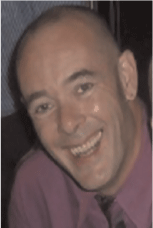An operational and scientific monitoring program (OSMP) for the Prelude and Ichthys fields: a case study from the Browse Basin
David Souter A , Steve Rogers A and Jamie Oliver AAustralian Institute of Marine Science.
The APPEA Journal 54(2) 480-480 https://doi.org/10.1071/AJ13053
Published: 2014
Abstract
An OSMP is the principle tool for determining the extent, severity and persistence of environmental impacts from an oil spill. The OSMP developed for the Shell Prelude and Inpex Ichthys gas fields has 13 operational monitoring programs (OMPs) and 12 scientific monitoring programs (SMPs) reflecting the complexity of the environment in which the developments are located. A partnership of organisations led by the Australian Institute of Marine Science (AIMS) will provide specialist expertise to help implement the OSMP. This unique multi-disciplinary partnership, comprising AIMS, CSIRO, University of Western Australia, Curtin University, WA ChemCentre and Monash University, guarantees capability and capacity, reducing the level of risk incurred by individual organisations within the partnership.
Fundamental to the success of any OSMP is the existence of adequate, fit-for-purpose baseline data against which post spill observations can be compared to determine the extent and severity of the spill and assess effectiveness of oil spill response. In addition, we believe adequate baselines with sufficient temporal resolution are essential for OSMP credibility and maintenance of the scientific reputations of partners. In committing capability to the OSMP implementation, AIMS and its partners have adopted a risk-based approach to assessing the adequacy of existing baseline data, to identify knowledge gaps, and assess the significance of those gaps and the feasibility of filling them. This extended abstract describes the structured approach taken to analyse the various risks and to develop a balanced suite of environmental baseline studies to address these risks.

David Souter is Senior Research Projects Manager at AIMS and led negotiations on behalf of AIMS and its partners during contracting of the OSMP for Shell’s Prelude and INPEX’s Ichthys developments and the associated Applied Research Program. Prior to joining AIMS, he was Research Director at the RRRC and managed all GBR research conducted under the Australian Government’s NERP Tropical Ecosystems Hub and its predecessor the Marine and Tropical Sciences Research Facility. David’s initial research interest focused on the crown-of-thorns starfish problem on the GBR but has been involved in coral reef research and tropical coastal ecosystems management in Australia, East Africa, the Indian Ocean Islands, South and Southeast Asia through World Bank, UNEP, Sida and AusAID-funded programs. |

Steve Rogers is the AIMS WA Business and Science Leader. Previous to this he was the CEO of the Cooperative Research Centre for Landscape Environments and Mineral Exploration and Managing Director of the Parker Centre Ltd (CRC for Integrated Hydrometallurgy Solutions). At CSIRO Land and Water he was a Principal Research Scientist with research focused on terrestrial microbial biochemistry and functional gene molecular biology, microbial ecotoxicology and biogeochemistry of inorganic and organic contaminants, bioremediation, geomicrobiology and mineral bioleaching. |

Jamie is Research Director at the Australian Institute of Marine Science. Prior to this he was Science Leader for Western Australia and Leader of the Exploring Marine Biodiversity Research Team at AIMS. Before joining AIMS Jamie worked for the WorldFish Center, where he managed a range of coral reef projects including ReefBase, a global information system for coral reefs. During this time he served as Co-Chair of the Global Coral Reef Monitoring Network Management Committee and Chair of the International Coral Reef Action Network Steering Committee. Prior to WorldFish he was the Director of Information Support at the Great Barrier Reef Marine Park Authority and a senior scientist at the Australian Institute of Marine Science. During this period he conceived and led the production of the first State of the Great Barrier Reef World Heritage Area Report and edited the first AIMS Long-Term Monitoring Report for the GBR. Jamie was a member of the JCU Coral Reproduction Group which was instrumental in discovering the mass coral spawning phenomenon, and which was awarded Australian Eureka Prize in 1992. His other reef interests include coral ecology, coral bleaching, remote sensing, reef monitoring and management and larval dispersal. |


